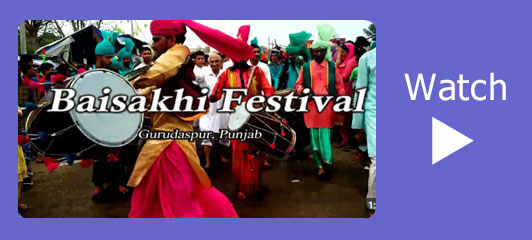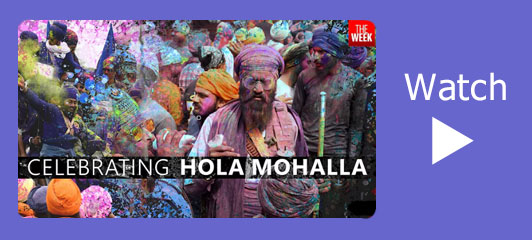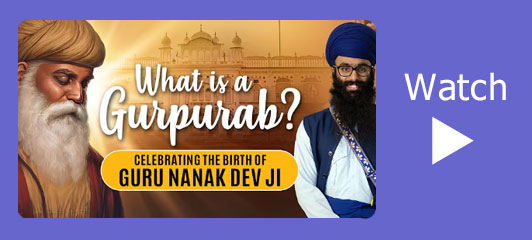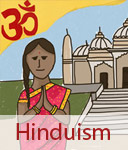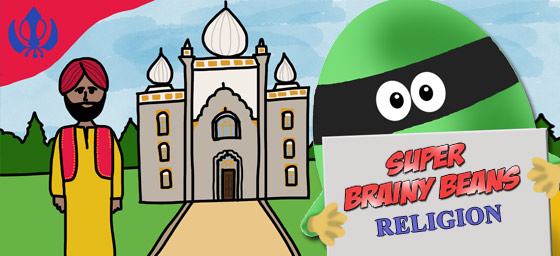
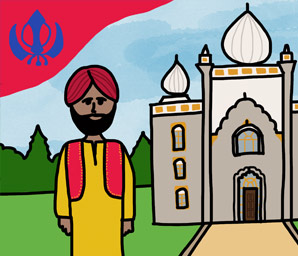
Sikhism for kids
Sikhism for kids in Primary Learning. Homework help with what Sikhism is, how Sikhs worship and what their holy festivals and traditions are.
What is Sikhism?
Sikhism began over 500 years ago, in 1499, in the Punjab region of India. It was founded by Guru Nanak, who taught that everyone is equal, that there is one God, and that people should live honestly and help others.
The word “Sikh” comes from the Punjabi language and means “disciple” or “learner.” Sikhs are followers of the teachings and writings of the ten Sikh Gurus, who each added to the religion’s wisdom and traditions.
Sikhism teaches that all people, no matter their race, gender, or background, are equal in God’s eyes. Sikhs believe in working hard, sharing with others, and remembering God in everything they do.
 What is Sikhism?
What is Sikhism?Sikhism was founded by Guru Nanak around 500 years ago in a place called the Punjab. This is an area which spans part of India and Pakistan in South Asia today.
 Sikhism
SikhismSikhism is a religion of India that was started by a man named Nanak. He was the first of the 10 Gurus, or teachers, of the Sikhs.
What is the symbol of Sikhism?
 The main symbol of Sikhism is called the Khanda. It is made up of three parts:
The main symbol of Sikhism is called the Khanda. It is made up of three parts:
A double-edged sword in the centre, representing the power of truth.
A circle (called a chakkar) symbolises God’s unity and eternity.
Two curved swords (called kirpans) on each side, which stand for spiritual and worldly strength.
The Khanda reminds Sikhs to live bravely, protect others, and stand up for what is right.
Sikh beliefs
 Sikhism teaches people to live good lives through honesty, kindness, equality, and service to others. Sikhs believe in one God, who created everything and is present everywhere.
Sikhism teaches people to live good lives through honesty, kindness, equality, and service to others. Sikhs believe in one God, who created everything and is present everywhere.
When Sikh babies are born, boys are given the name “Singh,” meaning lion, and girls are given the name “Kaur,” meaning princess. These names show equality and strength.
Sikhs also follow the Five Ks, which are special symbols that remind them of their faith:
- Kesh – Uncut hair, showing respect for God’s creation. Sikhs cover their hair with a turban (for men) or a scarf (for women).
- Kangha – A small wooden comb used to keep hair neat and tidy, symbolising cleanliness and order.
- Kara – A steel bracelet worn on the wrist as a reminder to do good deeds and to act honestly.
- Kachera – Special cotton shorts that represent modesty and self-control.
- Kirpan – A small sword symbolising courage and the duty to protect others and fight for justice.
How do Sikhs worship?
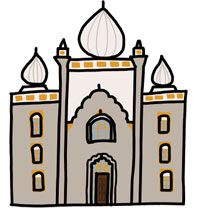 Sikhs believe that they can pray anywhere and at any time — at home, at work, or while travelling — because God is everywhere. Many Sikhs begin and end their day with prayer, reading from the Guru Granth Sahib or reciting special prayers such as the Japji Sahib.
Sikhs believe that they can pray anywhere and at any time — at home, at work, or while travelling — because God is everywhere. Many Sikhs begin and end their day with prayer, reading from the Guru Granth Sahib or reciting special prayers such as the Japji Sahib.
At home, Sikh families often have a small prayer room or corner called a shrine. There, they might keep a copy of the Guru Granth Sahib (or a smaller prayer book), and they light candles, cover their heads, and sit quietly while praying or singing hymns together.
Many Sikhs also go to a gurdwara, which means “the house of the Guru.” It is a special place of worship where everyone is welcome, no matter what their religion or background. Before entering, Sikhs remove their shoes, wash their hands, and cover their heads with a scarf or turban as a sign of respect.
Inside the gurdwara, people sit cross-legged on the floor to show that everyone is equal before God — rich or poor, young or old, man or woman. At the front is the Guru Granth Sahib, the Sikh holy book, which is treated with great care. The Granthi, who looks after the holy book, reads or sings from it while everyone listens and reflects.
After prayers, everyone is invited to share a free meal called langar. This meal is cooked and served by volunteers, and everyone eats together, regardless of religion or social background. It is a powerful reminder of Sikh values like equality, sharing, and community service (seva).
 Where do Sikhs worship?
Where do Sikhs worship?Sikhs worship in a building called a Gurdwara - literally meaning ‘the door that leads to the guru.’ Every Gurdwara has a copy of the Sikh holy scriptures, the Guru Granth Sahib.
What is the Guru Granth Sahib?
The Guru Granth Sahib is the holy book of Sikhism, and Sikhs believe it is their eternal Guru — a living teacher that continues to guide them even today. It contains hymns, prayers, and teachings written by the ten Sikh Gurus and other wise men and women from different faiths, showing that truth and goodness belong to everyone.
The Guru Granth Sahib teaches Sikhs to live honestly, help others, treat everyone equally, and remember God in everything they do. The writings are in poetic form, often sung as hymns called shabads, which make Sikh worship joyful and musical.
The book is always treated with great respect. It is kept on a raised platform called a manji, covered with a beautiful cloth called a rumalla when not in use. Sikhs never place anything above the book, and they always approach it with bowed heads.
At the end of each day, the Guru Granth Sahib is carefully “put to bed” in a special room called the Sach Khand (“the realm of truth”). This ceremony shows the deep love and respect Sikhs have for their Guru.
Sikh ceremonies
Dastar Bandi (Turban Tying Ceremony)
The Dastar Bandi is an important milestone in a young Sikh boy’s life. It is the ceremony where he wears his first turban — a symbol of maturity, identity, and faith. The ceremony often takes place at the gurdwara, where the Granthi or an elder ties the boy’s turban for the first time. Family and friends gather to celebrate with hymns, prayers, and sweets.
The turban reminds Sikhs to live with honour, courage, and respect for others.
Weddings (Anand Karaj)
A Sikh wedding is called an Anand Karaj, which means “a joyful union.” The ceremony usually takes place in a gurdwara, where the bride and groom sit before the Guru Granth Sahib.
During the ceremony, they walk four times around the holy book, holding a scarf that joins them together. Each circle, or lava, represents a step towards a loving and spiritual marriage, guided by God.
After the ceremony, family and friends share food, music, and dancing to celebrate. Everyone is welcome, showing the Sikh belief in inclusion and happiness for all.
Funerals
In Sikhism, death is seen as part of the cycle of life, not something to fear. Sikhs believe that when someone dies, their soul leaves the body and is reborn into another life until it reaches mukti — freedom from rebirth and union with God.
When a Sikh passes away, the body is washed and dressed simply, often in white. The funeral includes prayers and hymns from the Guru Granth Sahib, reminding everyone to live truthfully and remember God. The body is usually cremated, and ashes are often scattered in a river.
The ceremony focuses on peace and remembrance, not sadness. Family and friends come together to pray for the soul’s journey and to celebrate the person’s life.
The Ten Sikh Gurus
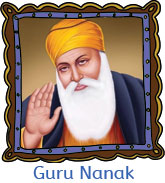 Sikhs have had ten human Gurus, each of whom helped build the religion:
Sikhs have had ten human Gurus, each of whom helped build the religion:
- Guru Nanak – The first Guru and founder of Sikhism; he taught that there is one God for all people.
- Guru Angad – Collected Guru Nanak’s hymns and created the Punjabi script.
- Guru Amar Das – Taught equality and began the langar tradition.
- Guru Ram Das – Founded the city of Amritsar, where the Golden Temple stands.
- Guru Arjan – Built the Golden Temple and collected the first version of the Guru Granth Sahib.
- Guru Hargobind – Taught Sikhs to defend themselves and stand up for justice.
- Guru Har Rai – Encouraged kindness and care for animals and the environment.
- Guru Har Krishan – Helped the sick during a disease outbreak in Delhi when he was only a boy.
- Guru Tegh Bahadur – Stood up for religious freedom and protected others’ right to believe.
- Guru Gobind Singh – Created the Khalsa, a group of dedicated Sikhs who follow the Five Ks, and made the Guru Granth Sahib the final, everlasting Guru.
Sikh Festivals
Festivals are very important in Sikhism because they celebrate key events in the lives of the Gurus and the history of the Sikh community. They are times for prayer, joy, sharing food, and helping others. Here are some of the most important Sikh festivals:
Baisakhi/Vaisakhi
Baisakhi or Vasiskhi is one of the most important festivals for Sikhs. It celebrates the creation of the Khalsa in 1699 by Guru Gobind Singh, the tenth Sikh Guru.
At that time, Guru Gobind Singh wanted to bring Sikhs together as one strong, brave, and united community who would live by truth and courage. On Baisakhi day, he called thousands of people to a large gathering. There, he created the Khalsa, a group of devoted Sikhs who promised to live good, honest lives, protect others, and keep the Five Ks (symbols of their faith).
Today, Baisakhi is celebrated every year in April. Sikhs visit the gurdwara to pray, sing hymns, and listen to readings from the Guru Granth Sahib. Gurdwaras and homes are decorated with flowers and flags, and colourful parades called Nagar Kirtans take place through the streets, with singing, music, and people giving out free food and drinks.
Diwali - Festival of Lights
Sikhs celebrate Diwali, the Festival of Lights, to remember a very special event in Sikh history. When Guru Hargobind, the sixth Guru, was imprisoned by a Mughal ruler, he refused to leave the prison unless 52 other kings who were wrongly imprisoned could go free with him. The ruler agreed, and the Guru returned to the city of Amritsar, welcomed joyfully by the people.
To celebrate his release, the people of Amritsar lit up the Golden Temple with hundreds of beautiful lamps, candles, and lights. That’s why Diwali is known to Sikhs as the “Bandi Chhor Divas”, meaning “the Day of Liberation.”
Today, gurdwaras are decorated with colourful lights and candles, and fireworks light up the sky. Families visit the temple, give thanks, share sweets, and remember the Guru’s bravery and compassion.
Hola Mohalla
Hola Mohalla is a lively and exciting Sikh festival that was started by Guru Gobind Singh. It takes place the day after the Hindu festival of Holi and was created to remind Sikhs to be both spiritual and strong.
During Hola Mohalla, Sikhs demonstrate martial arts, horse riding, and mock battles, showing their courage and readiness to protect others. But it’s not all serious — there are also songs, prayers, parades, and free food served to everyone.
The main celebrations happen in Anandpur Sahib in India, where thousands of people gather to take part. The festival reminds Sikhs that bravery and kindness go hand in hand.
Gurpurbs
Gurpurbs are very special days that celebrate the birthdays or important events in the lives of the ten Sikh Gurus. The most widely celebrated Gurpurb is the birthday of Guru Nanak, the founder of Sikhism.
On Gurpurbs, Sikhs gather at gurdwaras for prayers and hymns. The Guru Granth Sahib is read from start to finish in a continuous reading called an Akhand Path, which lasts around 48 hours.
There are colourful processions, or Nagar Kirtans, through the streets with singing, drumming, and decorated floats carrying the Guru Granth Sahib. Gurdwaras are adorned with lights, flowers, and flags, and everyone enjoys Karah Prasad, a sweet food made from flour, butter, and sugar, which is shared equally among all.
Famous Sikhs
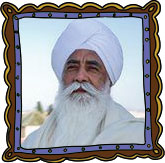
Bhai Sahib Bhai Mohinder Singh (1939– )
Bhai Sahib Bhai Mohinder Singh is a respected Sikh leader from Birmingham, England. He is the head of Guru Nanak Nishkam Sewak Jatha, a Sikh community organisation that works to help others through charity, education, and service. He has helped build schools, hospitals, and peace projects all around the world. Bhai Sahib is also known for bringing people of different faiths together and encouraging kindness, respect, and understanding between communities. In 2012, he was given the Pontifical Knighthood of St. Gregory by the Pope — a rare honour for someone of another faith — in recognition of his peace work.

Harbhajan Singh (1980– )
Harbhajan Singh is one of India’s most famous cricketers. He played for the Indian national team and helped them win many important matches, including the 2007 ICC World Twenty20 and the 2011 Cricket World Cup. Known as “The Turbanator,” Harbhajan proudly wears his Sikh turban when he plays, showing that faith and sport can go hand in hand. Off the cricket pitch, he supports charities that help children and families in need. Harbhajan inspires many young Sikhs to follow their dreams while staying true to their beliefs.

Gurinder Chadha (1960– )
Gurinder Chadha is a British Sikh film director and writer. She is best known for creating the much-loved film “Bend It Like Beckham,” which tells the story of a young Sikh girl who dreams of playing football. Her films often explore themes of culture, family, and identity, helping people understand what it’s like to grow up in two cultures at once. Gurinder’s work has inspired millions of people around the world and shown that being proud of your background is something to celebrate. She has also been honoured for promoting diversity in film and television.
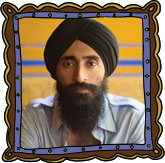
Waris Ahluwalia (1974– )
Waris Ahluwalia is a Sikh actor, model, and designer from New York City. He has appeared in films such as The Grand Budapest Hotel and The Darjeeling Limited, and is also known for his elegant jewellery designs. Waris is proud of his Sikh heritage and is often seen wearing his turban on red carpets and in fashion magazines. He works to promote understanding and inclusion, encouraging people to see beauty in diversity. Through his success, Waris has helped change the way Sikhs are represented in the media and shown that kindness, confidence, and creativity can go a long way.


